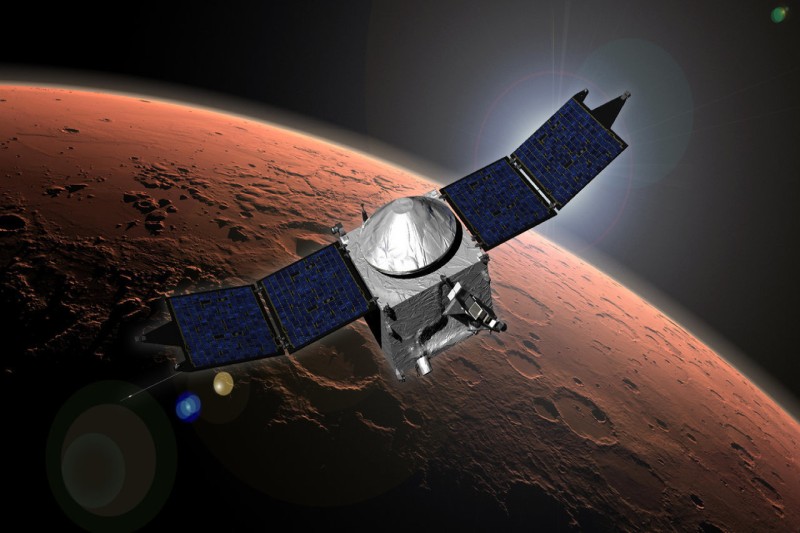The abrupt and unexpected “disappearance” of the solar wind, a stream of charged particles that constantly emanates from the sun, was seen by NASA’s MAVEN (Mars Atmosphere and Volatile Evolution) mission. This was brought on by a unique kind of solar event that moved through the solar system with such force that it left a gap in its wake.
This event caused a large decrease in the amount of particles that make up the solar wind, according to measurements made by MAVEN on Mars. The Martian atmosphere and magnetosphere stretched thousands of kilometers in the absence of solar wind pressure. As of right now, MAVEN is the only instrument on Mars that can observe the sun’s activity and the Martian atmosphere’s reaction to these solar influences at the same time.
Professor Jasper Halekas of the University of Iowa, who is the principal author of a recent paper on the incident, said, “When we first saw the data, and how dramatic the drop in the solar wind was, it was almost unbelievable.” “We formed a working group to study the event, and we have found this time period to be rich with incredible findings.”
Mars is continuously submerged in the solar wind, just like every other planet in our solar system. The Martian magnetosphere and ionosphere are under pressure from the solar wind, which also largely propels atmospheric escape. Faster solar wind that passed slower solar wind in December 2022 was the source of the solar event because it behaved like a broom, sweeping and squeezing the two zones together.
MAVEN noticed a rare void of extremely low-density solar wind in the wake of this contact, which is referred to as a stream interaction zone. The solar wind’s “disappearance” caused amazing reactions in the magnetosphere and ionosphere of Mars.
The planet’s magnetosphere and ionosphere were able to expand by thousands of kilometers—more than tripling their normal size—and underwent a significant shift in composition as the density of the solar wind decreased by a factor of 100. The Martian ionosphere, which is normally entrenched in the magnetic field of the sun, was forced outward, changing its magnetic state from magnetized to unmagnetized.
Simultaneously, the region bounded by the magnetosphere and solar wind became exceptionally electromagnetically silent. To gain a better understanding of the physics underlying the atmosphere and water loss on Mars, MAVEN’s observations of this spectacular event, as well as the subsequent modification and expansion of the entire system, are crucial.
“We are really getting to see how Mars responds when the solar wind is effectively removed,” Halekas said. “It makes for a great outlier study on what Mars would be like if it were orbiting a less ‘windy’ star.”
This was the first time the MAVEN mission had the chance to witness a disappearing solar wind event of this magnitude, which is incredibly rare and occurs at a period of increased solar activity. While other spacecraft on Earth and Mars observed parts of this event as well, only MAVEN was able to measure the sun’s reaction to the event simultaneously with the Martian atmosphere’s.
“Scientistically, observing extreme conditions is always invaluable,” stated Shannon Curry, the University of California, Berkeley’s primary investigator for MAVEN. “MAVEN was designed to observe these types of interactions between the sun and the Martian atmosphere, and the spacecraft provided exceptional data during this truly anomalous solar event.”
Our knowledge of extreme solar occurrences may be further enhanced by the MAVEN mission as the sun approaches solar maximum, the pinnacle of its 11-year activity cycle.
Gina DiBraccio, deputy principle investigator for MAVEN and deputy head of the Heliophysics Science Division at NASA’s Goddard Space Flight Center in Greenbelt, Maryland, stated, “This really shows the cross-divisional role that MAVEN plays at Mars.” “MAVEN is not only observing the dynamics of the Martian atmosphere, it is also monitoring solar inputs to enhance our understanding of the sun.”
The study is being presented in San Francisco at the American Geophysical Union Fall Meeting.





